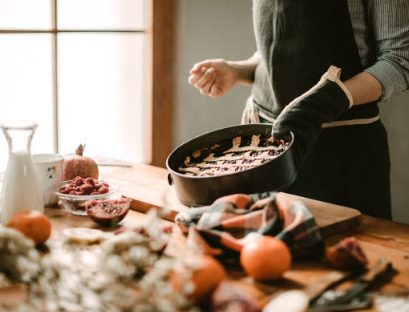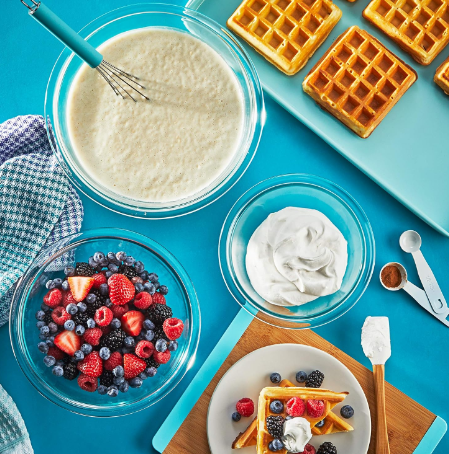According to Professional Bakers, The Best Apples for Pie (And the 3 Worst)
As the saying goes,”one bad apple ruins a bunch of apples”. And “bad” or less-than-ideal apple varieties can ruin your goal of baking a delicious, bakery-quality apple pie from scratch.
We have previously introduced you to 17 types of apples for cooking and baking. So, with so many options to choose from, how do you know which apple is best for apple pie?
On top of that, the best fillings are made with apples that are as fresh as possible, says Lauren Grant-Vose, founder of Zestful Kitchen.
From here, it’s crucial to consider taste and texture.

“The best apple varieties for making pies are softened in the oven while maintaining their shape. They have a sour or sweet and sour flavor that balances with the sugar in the pie filling, but not too sweet. Culinary Hill’s Executive Chef and CEO, Meggan Hill, explains.
Laurie Lewis, pastry chef at Culinary Canvas Catering in St. Louis, Missouri, says the hard texture allows it not to completely break down and turn into something like applesauce when baked and caramelized.
7 Best Apples for Apple Pie
Braeburn
Braeburn apples have a perfect blend of sour and sweetness and are “great for apple pie because they soften well during roasting while still having some texture,” says Grant Voss, who rates Braeburn apples as the best apple for apple pie. Book.
Hill added that because they have less juice than most other apple varieties, Braeburn doesn’t release as much liquid during cooking. Translation: According to Hill, even if you don’t add thickeners like cornstarch, your apple pie filling won’t run and your pie crust won’t get soggy. An added bonus: you may smell a faint hint of warm spices, such as sprinkled cinnamon, which makes Braeburn a natural candidate for apple pie. ”
Cortland
Cortland apples are juicy and have a bright sweet and sour taste. Despite their soft texture, Hill confirms that “they still retain their shape when baked”.
Envy
Envy apples are not green, they are red. But their name is honest because they have many enviable qualities. Due to their natural vitamin C content, Envy apples are a slower-browning apple (a winning quality for those who like to take the time to prepare pies), and Envy apples are “crisp and sweet with a honey flavor.” A similar flavor adds a unique flavor to the pie,” Lewis said. Fun fact: This fruit is a cross between the Braeburns apple and the Royal Gala apple.

Granny Smith
There are two main reasons why Hill chose this bright green apple variety as the best apple for apple pie. They soften when baked while maintaining a certain firmness and maintaining their shape. (No wonder they were the apple pie with cheddar rind of choice for our test kitchen.) Green apples are also the sour and sour of all apples, Hill says, “which allows you to control the sweetness and sweetening of the apple pie filling.” ”
Honeycrisp
Honeycrisp is one of the most popular varieties of fresh apples for snack and baking, and our panel of experts has named honeycrisp apples as one of the best apples for making apple pie. They’re very crisp, firm, juicy, and “have honey sweetness and some lingering sourness,” Hill says. (shh……h Try our apple and brown butter pie!)
Jonathan/Jonagolds
Hill says the Jonathan apple and its cousin, the Jonagolds apple (a cross of the Jonathan apple and the golden crown apple), have a sweet, sour taste and a crisp and firm texture. Since they usually hold their shape well during baking, they are ideal for making apple pie as well as other baked goods such as chips, pies, and breadcrumbs.
Pink Lady
Lewis explains that, admittedly, this apple variety is a bit bitter, but the natural sugar caramelizes when roasted. Pink Lady also has beautiful skins, which will be eye-catching if you like apple peels in pies and plan to make lattice tops or “open side” (single skin) pies.
The 3 Worst Apples in Apple Pie
Now that we’ve walked you through the produce aisle to choose the best apples to make apple pie, let’s discuss the fruits that are best to avoid.
“By far the worst quality is powdered or pasted after baking,” Grant Voss confirmed. “Another undesirable quality is turning brown during baking. Finally, the lack of flavor is also a desirable quality. Some apples don’t retain much of their flavor during the roasting process.”

Apples that are too sweet can also be saved for other uses, as the rest of the pie recipe contains a lot of sugar. You’ll see some sourness to add balance and complexity.
All three master bakers agree that the worst apple pies include:
- Fujifilm: Fuji apples decompose quickly at high temperatures and can “leak” a lot of liquid,”which is a quick way to get your pie from crisp to wet,” Lewis said.
- Gala: Since Gala apples aren’t as hard as the best apples mentioned above to make apple pie, it’s easy to overcook them when baked. Lewis believes that it is wise to choose something with a stronger bite.
- Red Delicious: This variety tastes too sweet and doesn’t cope well with the heat of roasting (doesn’t break down into a paste).
“Save these apples for applesauce because their structure will naturally disappear,” Hill advises. Or add one to a well-structured apple mix to add texture to the filling.”
Should More Than One Apple Be Used in Apple Pie?
This begs the question: is it stupid to stick with just one of the best apples for apple pie when we can mix and match?
It depends on who you’re asking and what you prefer. Lewis “likes to mix textures and flavors to find more creative pairings. I recommend that you choose at least two different pie varieties. (The two-to-one ratio of crackers to Australian green beans was her best choice.)
Hill echoed the same sentiment and vowed that “it’s fun to try and nail on your ideal apple combination.”
Grant Worth personally prefers “a filling that uses one type of apple for consistent flavor and texture,” she explains. “I’ve found that when using both types of apples, there will inevitably be some mushy apples and some hard apples in the filling. This also happens when I make apple pear pie.”
If you don’t mind this inconsistency and find yourself craving multiple flavors, consider continuing with two or more apples to create your own dream team.
The Bottom Line
The best apples to make apple pie are hard, delicious, sour, and most importantly, fresh. Braeburn, Cortland, Envy, Granny Smith, Honeycrisp, Jonathan/Jonagolds, and Pink Lady are the best apple varieties for pie recipes. On the other hand, we have the types of apples that exude moisture, are soft and sweet, and they are the least suitable types of apples for pies: Fuji, Gala, and Red Delicious.
When you’re ready to create and customize your personal best pies, you may want to consider mixing two or more types in the same pie filling. This results in an exciting change in taste and consistency with each bite.



